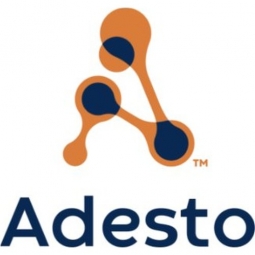下载PDF
Healthy Automation: Echelon Technology Improves Hospital Operating Rooms

技术
- 功能应用 - 远程监控系统
- 基础设施即服务 (IaaS) - 其他
- 传感器 - 气流传感器
- 传感器 - 湿度传感器
- 传感器 - 压力传感器
- 传感器 - 温度传感器
适用行业
- 医疗保健和医院
适用功能
- 设施管理
用例
- 楼宇自动化与控制
挑战
• 升级手术室和重症监护室的 HVAC 系统 • 使用开放系统,无需复杂网关即可集成传统和未来系统
客户
伊本比伦医院
关于客户
位于德国伊本比伦的伊本比伦医院是一家为德国北莱茵-威斯特法伦州施泰因富特地区提供服务的急症护理医院。
解决方案
当医院想要改善其手术室和重症监护室 (ICU) 的环境控制时,管理人员与集成商 HGI Heger Gebäudeautomation Ingenieurgesellschaft mbH 和 ABB Gebäudetechnik AG 合作,实施了 Echelon Corp 基于 LonWorks® 技术的控制网络系统。一个新的 HVAC 系统,其设备集成了 Echelon 的 LonWorks 兼容 IC,集成了多供应商产品和旧系统。基于 LonWorks 的设备和传感器监测和控制房间温度、气压和湿度,以满足患者健康所需的严格要求。由 Echelon SmartServer 提供的警报有助于确保 Ibbenbüren 医院手术室和 ICU 的条件对患者来说是安全和最佳的。
收集的数据
Alarms For Automated Applications, Facility Health Status, Facility Management, HVAC ( heating, ventilation, air conditioning)
运营影响
相关案例.

Case Study
Hospital Inventory Management
The hospital supply chain team is responsible for ensuring that the right medical supplies are readily available to clinicians when and where needed, and to do so in the most efficient manner possible. However, many of the systems and processes in use at the cancer center for supply chain management were not best suited to support these goals. Barcoding technology, a commonly used method for inventory management of medical supplies, is labor intensive, time consuming, does not provide real-time visibility into inventory levels and can be prone to error. Consequently, the lack of accurate and real-time visibility into inventory levels across multiple supply rooms in multiple hospital facilities creates additional inefficiency in the system causing over-ordering, hoarding, and wasted supplies. Other sources of waste and cost were also identified as candidates for improvement. Existing systems and processes did not provide adequate security for high-cost inventory within the hospital, which was another driver of cost. A lack of visibility into expiration dates for supplies resulted in supplies being wasted due to past expiry dates. Storage of supplies was also a key consideration given the location of the cancer center’s facilities in a dense urban setting, where space is always at a premium. In order to address the challenges outlined above, the hospital sought a solution that would provide real-time inventory information with high levels of accuracy, reduce the level of manual effort required and enable data driven decision making to ensure that the right supplies were readily available to clinicians in the right location at the right time.

Case Study
Gas Pipeline Monitoring System for Hospitals
This system integrator focuses on providing centralized gas pipeline monitoring systems for hospitals. The service they provide makes it possible for hospitals to reduce both maintenance and labor costs. Since hospitals may not have an existing network suitable for this type of system, GPRS communication provides an easy and ready-to-use solution for remote, distributed monitoring systems System Requirements - GPRS communication - Seamless connection with SCADA software - Simple, front-end control capability - Expandable I/O channels - Combine AI, DI, and DO channels

Case Study
Driving Digital Transformations for Vitro Diagnostic Medical Devices
Diagnostic devices play a vital role in helping to improve healthcare delivery. In fact, an estimated 60 percent of the world’s medical decisions are made with support from in vitrodiagnostics (IVD) solutions, such as those provided by Roche Diagnostics, an industry leader. As the demand for medical diagnostic services grows rapidly in hospitals and clinics across China, so does the market for IVD solutions. In addition, the typically high cost of these diagnostic devices means that comprehensive post-sales services are needed. Wanteed to improve three portions of thr IVD:1. Remotely monitor and manage IVD devices as fixed assets.2. Optimizing device availability with predictive maintenance.3. Recommending the best IVD solution for a customer’s needs.

Case Study
HaemoCloud Global Blood Management System
1) Deliver a connected digital product system to protect and increase the differentiated value of Haemonetics blood and plasma solutions. 2) Improve patient outcomes by increasing the efficiency of blood supply flows. 3) Navigate and satisfy a complex web of global regulatory compliance requirements. 4) Reduce costly and labor-intensive maintenance procedures.

Case Study
Harnessing real-time data to give a holistic picture of patient health
Every day, vast quantities of data are collected about patients as they pass through health service organizations—from operational data such as treatment history and medications to physiological data captured by medical devices. The insights hidden within this treasure trove of data can be used to support more personalized treatments, more accurate diagnosis and more advanced preparative care. But since the information is generated faster than most organizations can consume it, unlocking the power of this big data can be a struggle. This type of predictive approach not only improves patient care—it also helps to reduce costs, because in the healthcare industry, prevention is almost always more cost-effective than treatment. However, collecting, analyzing and presenting these data-streams in a way that clinicians can easily understand can pose a significant technical challenge.






